Interview with Michael Low, creator of Starsworn and Luck of Legends!
Note: this is a transcripted interview, edited for ease of reading
Jump to:
- Introductions
- Designing for kids
- First TTRPG experiences
- Stories RPG
- Relating to teaching
- Benefit to kids
- Game example: Monster High
- Cooperative elements
- Positive conflicts
- System development
- Working with Stories Podcast
- Learning and growth in kids
- Character development
- Recommendations
- Links!
Can you introduce yourself?
I have been teaching for more than two decades, mostly at the high school level, but I’ve taught all ages. Literally kindergarten through adult. I taught for some private companies before I went to the public school classroom.
I have also been designing since I realized you could do that. It’s exciting! I was like, wow, you can make your own games? I’m going to do that!
Recently, two of my friends from high school independently reminded me of different games I made. My buddy, Sean Dove, who’s an artist, he’s super cool and worked on Transformers and G.I. Joe, he was like, “Remember we used to play that game, LEGO Battlez on your mom’s tile floor? You built LEGO vehicles and blew each other up to steal parts? That was a great game!”
And I was like, “Yeah – I made that game.”
And he was like, “I thought it was a legit game!”
Well… it was. I just made it! I think I was about 12? And it continued on into adulthood as a terrible life-long affliction.
You design for kids now, correct?
Recently, within the past two years, my design focus shifted to designing for kids. Especially since my son was old enough, it was just a wonderfully fun thing to do, and he was in love with stories and couldn’t stop. Figuring out how to give him some structure and tools for learning how to do that became kind of a compulsion for me.
They are so much better at it than we are! No one has to teach them storytelling. The best TTRPGs give you ways to come to agreement and ways to find access to engage. If somebody is having trouble engaging, the best systems give them something to help them. If there’s a disagreement about what’s going to happen next in the fiction, the best TTRPGs help you come to consensus and agree on what should happen next to tell a great story.
Then, the next step for me was going into educating using games, which is what I do for a living.
What was your first tabletop RPG experience?
Oh gosh, I think my first table top experience was, like many people’s first experience, old AD&D.
Maybe my non-violent design future was kind of presaged by my approach… it was actually the same friend, Sean Dove, who ran my first game. I was a half-elven bard, and I remember he had a giant balrog show up, and my response was to be really polite and talk to it. I was like, “I don’t want to be mean to it, I don’t know what he’s into. Sure, he’s scary looking, but I wouldn’t want to be rude…”
He was like, “Why aren’t you fighting it?!”
That was followed by a lot of trad stuff when I was in high school and into college. I started designing my own games because I kind of got tired of fighting …. And I got tired of the mentality that was in, at the time, at a lot of game tables and a lot of the game community. It was very competitive and very aggressive and about wanting to mess the “enemy” up, and I didn’t want to mess anybody up. I wanted to have a good time and tell a good story.
A good story happens because there’s drama, but drama doesn’t happen because there’s violence. Drama happens because you care. I was in so many violent games that I was bored. I didn’t have any buy in – none of the characters meant anything to me when they were piles of numbers.
I spent 15 years designing games for my non-gamer friends, then got lucky enough to reconnect with the design crew at Story Games Glendale. That’s kind of how I looped back around with bringing education into TTRPGs and TTRPGs into education.
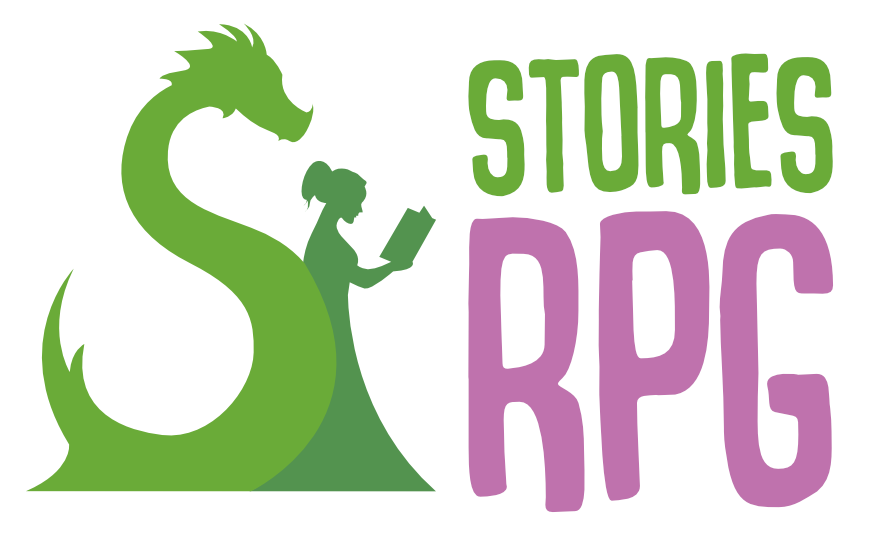
Can you tell us about Stories RPG and what was your motivation for creating it?
The cool thing about StoriesRPG (at storiesRPG.com) is that it’s a game I’ve actually been playtesting with kids for the past two years online.
We had a neighborhood game group with a bunch of kids who came over to our house, and we would play on a tabletop with LEGO figures. I had my own system I was using with them, and it was great. Then the pandemic hit and everyone was asking if we could still game – I said I’d figure it out, but when I moved into the online space, I realized I didn’t have the resources to make it work digitally. I would probably need to play some game that had resources I could use.
I loaded up 5th edition and I was just going to use whatever made it easiest. Within one session, I was deeply troubled because everything that I emphasized in my tabletop games – non-violent conflict resolution, community over competition, there are no villains to punch, you’ve got to get to know people if you want to figure out a real answer to problems – all of these immediately turned into, “people who don’t look like you are probably bad and killing or brutalizing them is a good idea.”
If you’re an adult and you want to play that way, that’s great. However, I’ve done some real research into RPGs, and there’s been a lot of good evidence about how imaginative play reshapes the brain. It’s like you’re having a real experience. Anyone who’s played a tabletop game can tell you we do change based on the stories that we tell and engage in. For me, when I play with adults, if they’re seeking violence, I always make it problematic. There’s a revelation that somewhere in the story arc – maybe we’re the bad guys. Or maybe there weren’t any bad guys to begin with, but there was a lot of ignorance and we played into it.
Then, when I was playing D&D with these kids, I was like… wow, I don’t really have a choice. If I problematize the violence, that’s traumatic. I just set them up. I put them into a game where they’re loaded and ready and pointed and “go get them, they’re bad”. If I spring “you shouldn’t have done that” on them afterwards, it’s a horribly unfair thing to do. Then… there’s the reverse: “isn’t that great and glorious and transformative to brutalize folks?” I didn’t want to do either.
So, I went back to the drawing board. Stories RPG is what evolved after two years of a writing focused camp that steals liberally from everything. It’s got Blades in the Dark mechanics and PbtA mechanics and a couple of things I cobbled together myself. It uses google docs, slides, and a couple different online rollers. We’ve got huge campaigns – researchers in the far-out fringes of known space, magical conservationists trying to save mythical creatures from extinction – you name it.
Online, every week, everyone has a story assignment to build the world. There are two guarantees that you get:
The first is whatever you write you will get to experience in the world. That’s a huge motivator.
The second one is there’s no penalty or criticism, only joy, but whatever stories you tell, you also get story points that help you build your character and build your world. So, you want a spaceship? Tell me a story about how you found your spaceship, how you bought it, what it can do… write that story. Great! You just bought a new ability for your character, and now you guys are going to be able to ride on that ship! If kids aren’t that invested, seeing other kids write hard and shape the world becomes a huge incentive – they want to be a part of the action and have everyone laugh and celebrate their ideas, too!
Another great trick is using Google Slides. I realized one reason big games stick in kids’ heads is simple: great art! I don’t have the money for a published game with the range and quality of DnD, but in a Google Slide deck, kids can find the images they want to inspire their world building. It’s a huge advantage for getting creative juices flowing, and most games end up with 50+ slides of settings, creatures, characters, and stories at the end of 5 classes.
I have a couple kids who have been going almost the entire two years with me who have gone from a couple sentences per game to one kid is writing a hundred page book on our adventures… and he’s 12! My son is 8, and he’s writing three page stories every week just on whatever he’s into this week. It’s pure encouragement. At the beginning of every game, we read everyone’s stories out loud and find the connections so we can knit them into the world and into each other. Then we play them out. Kid’s clap for each other and go wild and shout it out.
How did you think to put all this together and relate it to teaching?
I felt kind of dumb when I first figured this out. I knew for forever, since I was 11, how powerfully emotionally engaging and motivating story-gaming can be.
I say this all the time: education is a game that is very badly designed. We create a lot of ways to disengage and disagree and not a lot of ways to come to consensus and move forward. A lot of the same principles that helped me learn to teach have helped me learn how to design.As an educator, I spent my entire career reorganizing and trying to break the system to try to make the educational experience about ownership for kids. You own the learning, you pick the learning, you drive the car. I’m here to help you but I’m not here to force anything on you. You tell me what’s interesting, and I’ll teach you how to express it and learn about it to the best of my ability. When I started making story games for educational purposes, I just felt kind of dumb – like, “why didn’t I do this years ago?”
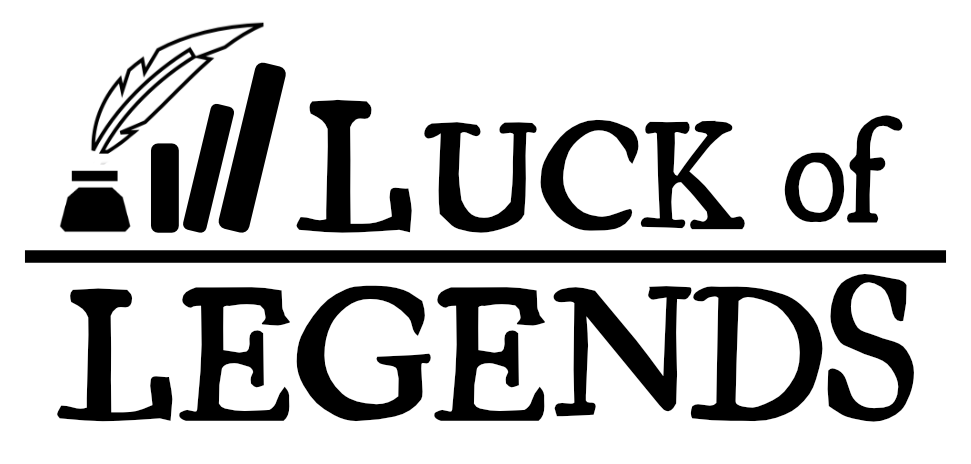
Combining TTRPG’s and education, there’s got to be so beneficial to kids
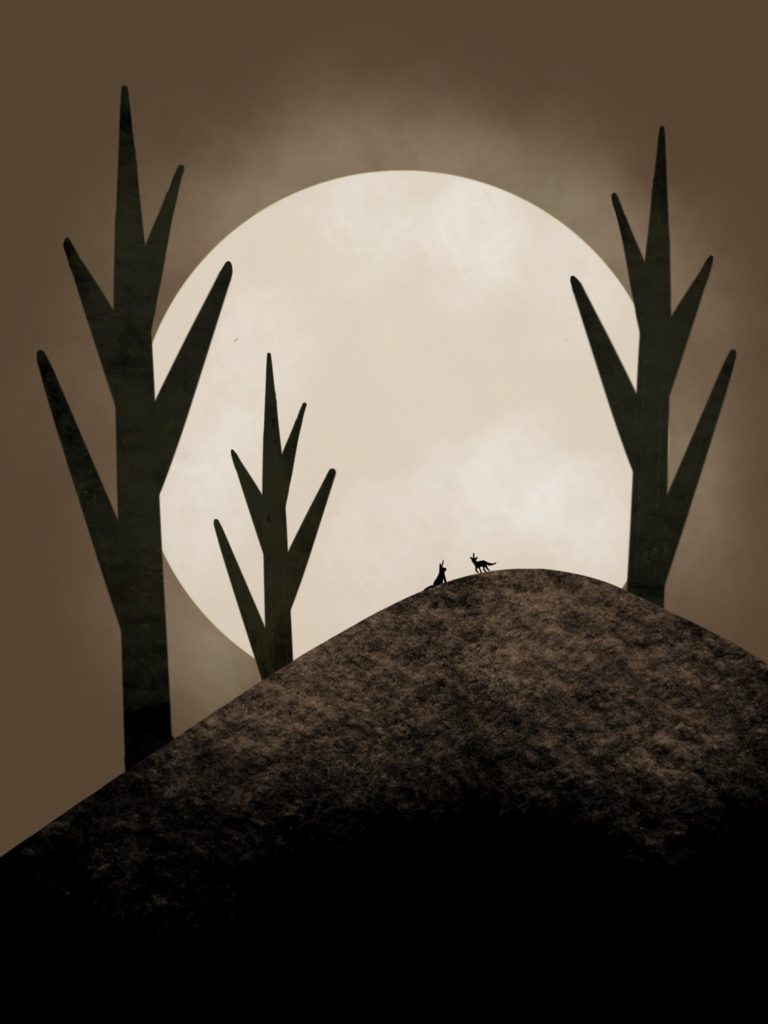
The identity shift has been wild. Kids go from “I don’t like writing” to “I like writing for the game” to “I’m a writer.”
One of my kid’s parents has been telling me that the school has been going wild over his slideshows, which is another piece of this. All of my curriculum is common core aligned, and at the end of each 5-6 week course, I give a standards-based, point-by-point breakdown on how the kids are doing. We go over all the big ones: producing things that are appropriate in voice and tone, conventions in grammar, development in voice, dialogue, descriptive prose, editing, revision, and presentation… and this kid is now a Google Slides master.
When I started the camp and turned it into a tutoring venture, I was not selling a game, I was selling a tutoring experience. I set up all these slideshows and took graphics and made them gorgeous, and kids get geeked out.
Can you show me one of the slideshows, maybe Monster High?
Sure! [reading the slideshow] It’s your freshman year, and your parents moved here so you could go to a school where you could fit in! But making friends, passing your classes, and keeping your cool is tough for a teenage monster.
You get to choose your archetype – you could be a beast, we’ve had medusas, werewolves. You can be undead – we have had a lot of ghosts and zombies. Outsiders are like aliens and fey. We had a demon once. There’s witches and warlocks.
It walks you through the basics of how the game works, the archetypes, the setting, the rules, a class schedule, and this is where the collective work goes. Every time there’s homework, we add a slide, and each kid gets their own slide. We determine at the end of each session what they want to write up about next session. They write up, page after page, and we do the read-aloud. Very often, they make me do voices, which is part of the celebration and seeing it come to life and being goofy with it.
The system is very story focused. Everything is about who you are and who you’re connected with. There are no numbers. Whenever you want to solve a problem, you use the things that you know about your character. Who are you friends with? Who are you frenemies with? Rivals with? What is your character like? What do they enjoy? What is their downfall?
Those “tags” give you a dice pool, up to three dice, or four if you’ve got a bonus if somebody helps you out. It’s a standard Blades in the Dark, 1-3 is a failure, 4-5 is a triumph but trouble, 6 is a triumph, and two 6’s is a super triumph.
Then there are also special abilities that are all upgrades to a roll. Maybe a werewolf can upgrade something physical once per day. This is the escape hatch that kids will pull if things are going wrong and get a bad roll.
You can buy new tags and special abilities with Story Points – you gain those by writing. After read-alouds, the kids get to decide, based on their own feeling of pride in their work, how many points they earned. Other kids can vote to raise the score (never lower it!).
I also let them spend story points for re-rolls. The great part is that if they really want something to go down, other kids are throwing story points to make somebody else’s roll succeed, which builds a lot of trust and a culture of support.
Those are great cooperative aspects!
Part of the point of my design is to build a system that incentives cooperation. I want kids cheering for each other.
There’s a very educational reason for that, which is: kids thrive on oxytocin and dopamine, and if you give them pure recognition, and there’s no chance to feel bad, only to feel good and get celebrated, they will be absolutely hooked. If I can get them hooked on writing and creativity and cooperation, then I feel like as an educator, I should.
In terms of challenges, there will eventually be a doom clock, but the doom clock is not like in Monster of the Week where larger events will occur and it’s a larger arc. It’s much more immediate. Like, last game I played, there was a doom clock for getting caught by the microbial guards before they could get to the palace in the center of the Gut. There were all sorts of things that they could do – run, distract the guards, help each other onto a passing bacterial wagon – so that’s the build clock. Each player gets one move per tick on the doom clock.
For example, if you have four players, I’d probably put two ticks on the doom clock. Then I’d click one, just to give a sense of intensity (this was something my friend, Moe Poplar, who made Shibuyan Knights, came up with when we were working together on Holdfast Station – that’s an adult game, though!). There are four players, you get four moves. Each of you has to do something to help you get away or get free. What are you going to do?
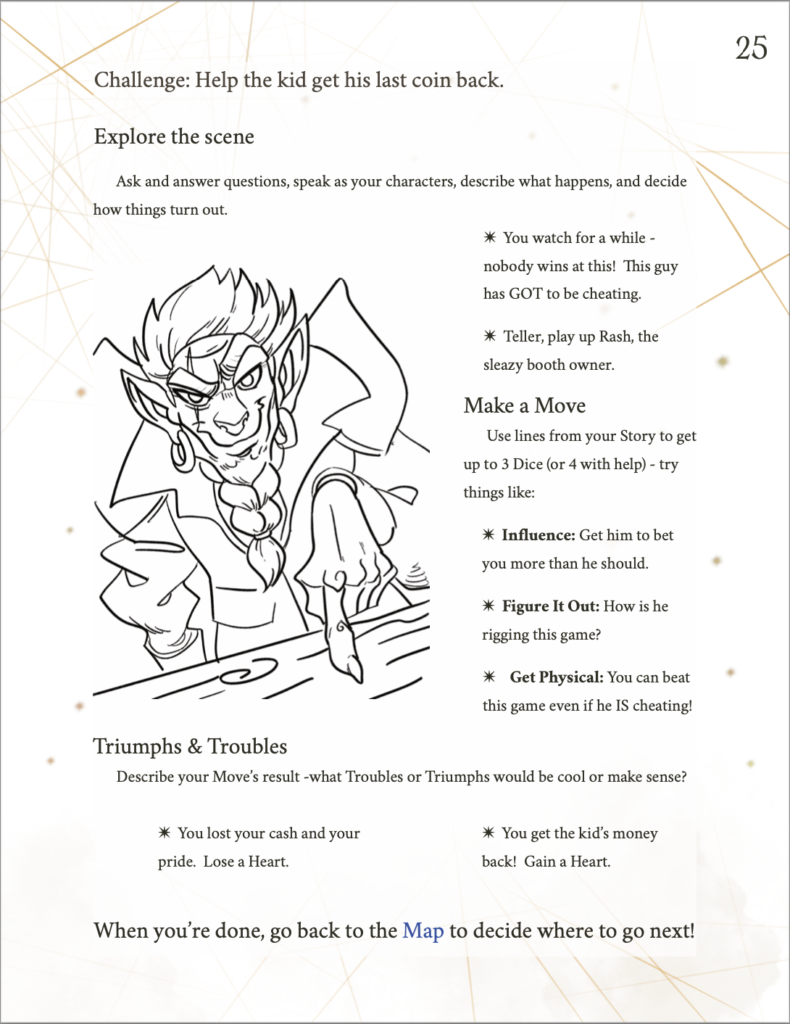
Each player gets to be creative and use their character’s abilities to think of ways to solve the problem. If you succeed, whether or not you created a trouble, that ticks on the build clock. Four ticks on the build clock, and you prevent one tick on the doom clock – and it’s prevented. If any of you fails, then there’s the potential that the doom clock will click, which means there’s more trouble and the story changes.
Kids will very much invest. I only had one time where kids said, “Let’s see what happens when the doom clock goes off.” It was a huge evolution – they weren’t afraid of failing, but were curious about how the story could grow BECAUSE they failed!
One of the other things that I’m trying to cultivate is a sense of grit. Failure is a wonderful thing in a story, and drama is great. Every time your character creates a problem in the story, you should celebrate because it’s going to make our story more interesting. You’re going to mess things up, and that’s going to be part of the experience we enjoy. It’s not something to be avoided or to be afraid of.
It’s kind of like positive conflict or growth through conflict – it was great using it to learn and grow the story when I was playing Starsworn with my son
Yes! Adults… we like to lose. A lot of the gaming culture is about wanting it to be dark and miserable. It’s gotta be really gruesome and I want to be tortured!
I don’t know… I’m 42 and I got a kid… this is supposed to be me having fun. There’s plenty of opportunities to fail in the world, but experiencing some struggle doesn’t have to mean that you experience trauma. Struggle can be positive and rewarding. Everyone knows that feeling of working towards it and then “I got it!” That’s the best. Cheering when that one roll comes up all roses, that’s the best.
I really enjoyed the system, and so did my son. It was really easy to jump into – how did you develop it?
I know kids love my system because I’ve tested the heck out of it, and they’ve changed a lot of things. There’s a lot of different things that I’ve altered because kids have taught me about how to run it and how to make it work. It’s been hundreds of hours at this point.
BUT, the goal here was to create something that addressed: how do you teach people to do the thing? Not by bringing them to teach at your house, because you can’t do that all the time, but to give them a thing that helps them access the experience. You need an ambassador. It’s like this with almost any tabletop game – nobody plays Monopoly for the first time from the rules. Somebody sat you down and said, “OK, you do this….” You didn’t read the manual, and it’s worse with TTRPGs. There’s a lot of stuff going on, and that takes a little coaching.
The goal with Starsworn was to give that to parents. I know a lot of parents who have never played a role-playing game and would never think to do that with their kid, and that’s an absolute shame because they’re AMAZING. As a parent, you can’t win harder than your kid telling stories all day.
It’s very low energy for me to run a game because I’ve been doing it for so long, but I was really invested, in Starsworn, in making something that both taught you the rules as you played and encouraged parents and kids who didn’t know what a story game was to learn as they went without any preparation.
And you’re working with Stories Podcast too, correct?
I’m just very lucky to have run into Daniel Hinds, the writer for Stories Podcast, which is the longest running and largest kids podcast on the internet, I think. I raised my kid on his stories. My son had respiratory issues when he was about one-and-a-half, and we were listening to Dog King and Dinosaur Christmas party to keep him calm when he was sick. We listened to all of his shows when my son was little.
I ran into him during a one-page TTRPG jam. He posted his one-pager as a game for parents to play with kids, and I was like… wait, that’s something I do! I asked if he wanted any feedback and looked at what he had, and he asked if I wanted to write a game with him. I was like, “Sure man, what do you?” and he said he wrote Stories Podcast. I was like…. [explosion sounds!!!]
The coolest part of this is that there’s huge potential in RPGs for kids because it’s a part of the community that nobody’s been touching. Gamer parents know how to run for kids, and they don’t need help from anybody and will just play with what’s on hand and figure it out, but non-gamers don’t get welcomed. There’s not a lot of on-ramps. Unless you know somebody and they push you to do it, you’re not going to know what to do.
So, Stories Podcast has a huge footprint, all these parents who are into stories and kids who are into stories – we could make a game that has a monthly chapter release. Then, Max Goodname and the Iron Penance is the actual play podcast of Stories RPG, and it’s a parallel storyline to the chapters. There will be crossovers! So the characters in the show will hear about things that the players have done in the stories at home. They will also occasionally show up in the chapters and there will be crossovers in terms of story structure and characters.
Every chapter also gives you little rules twists, like the temporary lines and choosing your star sign at the end of chapter two. Then you’ve got to write your story. I’m slowly working in the educational content and am super geeked about it!
What have you learned playing TTRPG’s with kids and how have these kids grown?
Kids have taught me that I have never made a story worse by saying, “Yes AND…”
I have had some conversations when kids had different ideas about where they wanted to take the story and needed to address, “if you do that, the story is going to shift like that…. Is EVERYBODY OK with that?”
We don’t work on the majority rules either – everyone agrees or we stay on the subject. It’s amazing how quickly kids will say, “It’s cool, I see why you all don’t want to do this thing, I’ll save it for this” when they know it will drag if they don’t reach consensus. They always find a compromise. To me, that is also another huge piece to this. There’s so many social-emotional skills.
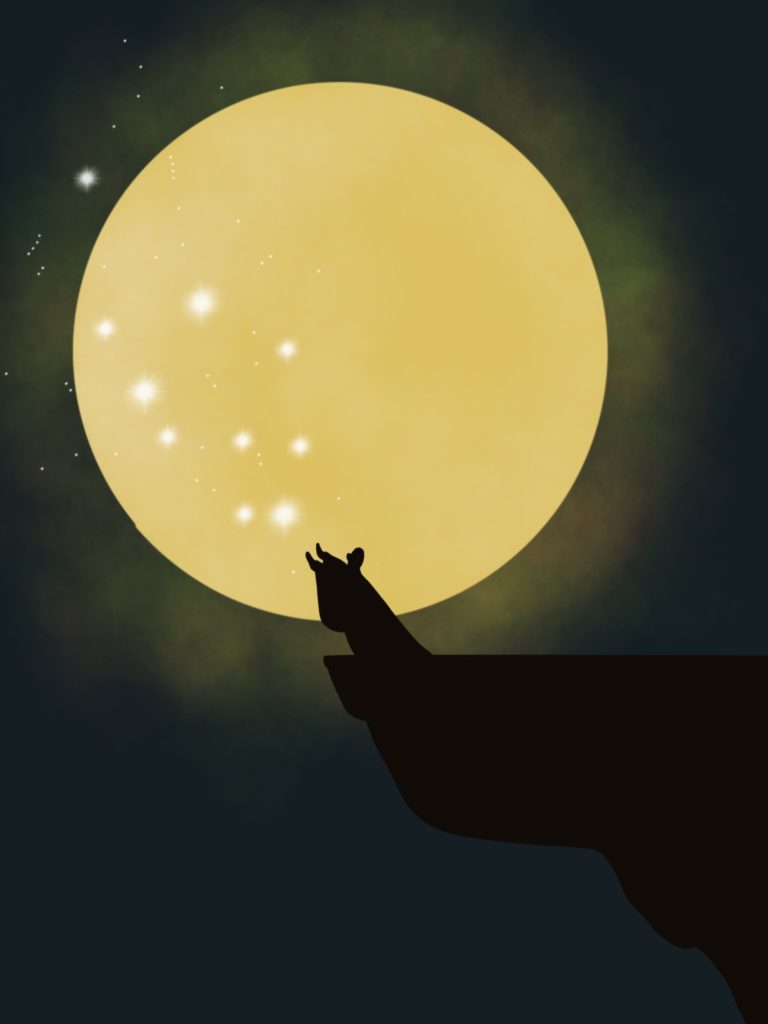
I’ve taught a lot of non-neurotypical kids, and a lot of spectrum kids do really well at learning all these really complex and nuanced emotional discussions because they have a practical way to interact with it. They’re getting to experience it again and again. We’re going to talk about it, and I understand why we all need to agree because otherwise the story would split, and then we can’t all be together… and I enjoy being together. So, there’s a lot of really complex learning that gets taken care of in a story game, and I want to democratize that as much as possible.
I’ve seen kids begin by imagining that a character is defined by what they can do. There’s a very capitalist or commercialist mentality that a person is a pile of abilities.
They’ll say, “I’m super strong and I can do this and that…”
I’ll say, “Yes, but you didn’t tell me who you are. You described yourself like a kitchen utensil. What do you like? What makes you funny? Adorable? Annoying? Who do you like? Who are you connected with? What’s important to you?”
That takes some coaching, but it’s a very personal form of growth. We don’t need to be super-powered – being real, breathing, flawed people is great.
Does the character development get more natural over time?
Some of the kids who have played for a while played Knights of the Microbe Biome. They play microbial knights from different parts of the body sworn to defend it from harm.
One of my kids is a fungus who comes from a long line of heroic fungi who defend the body. They live near the mouth, which is one of the places where the most bacteria and viruses come, so we really have to fight hard. Their character is really worried that he won’t live up to the legend of his people, and his dad was this big hero.
Another character is playing a critter from the guts. His character, she’s a runt. All the others are called mighty bears, and she looks small, so she has to use a shovel and is embarrassed, but she can glow up to blinding lights from her skin. She gets strong if she suppresses her glow, but if she stays dark for too long, her dark thoughts take over.
The third, was a brainwave who helps reroute dark thoughts. They can have super hearing and can hear negative thoughts crackling along and can swoop down and use electrical powers to redirect them. AND he has a baby brainwave that eats bad thoughts.
So each of these kids made flawed, weird, interesting characters – characters with problems to solve. Then the best part is when they connect it.
They had this realization in this last session during a chase scene – one needed to use super strength to pull this guy on board or they’re going to die. They could do it, but the dark thoughts were going to come up, and the brainwave kid goes, “Wait… my baby brainwave eats bad thoughts. And he’s hungry.”
They were all like “OOOOO!!!!! We got this!!”
That weaving of actual character understanding – these are abilities connected to WHO you are. I have a baby that I’m worried about, I have dark thoughts that take me over some time, we can help each other out.
It’s that idea of acceptance too. All of us are weird and different; that’s not anything to judge anyone for. We can still be a family and figure it out and be heroes.
What would be your recommendations for anyone starting out TTRPG’s with kids?
OK, so these are my go-to’s:
- Let’s talk it out – what would be fun or cool?
- Focus on achieving agreement together
- Don’t try to force the story to have a consequence
- Invite your kid to the table, invite your kid to have ownership of the story
- Learn to be flexible and to say ‘yes AND’
- Lean into everything they give you and don’t say no – story is not the place for no
- Emphasize togetherness
- Drama makes things fun – tell them that! In their favorite story, ask what would have happened if that kid didn’t have “insert problem here.” Would that have been a fun story? Nope!
- For parents just starting, live by the pirates’ code: beg, borrow, or steal. Don’t be ashamed. Every plotline you want to exploit, do it. Use it all.
- You need to have fun with it or they won’t.
And the number one: Safety tools are a must.
You need to create an emotional out for your kids, and you need to model that it is an emotional collaboration, not emotional obedience training. You are not telling them what to do. You are inviting them to the table, and it is all about them engaging and you engaging and both of you agreeing on what happens.
If you don’t do that, you’re running the risk of having an unpleasant experience where you’re saying what happens, and they feel like, “how dare you?!” Because it’s a story that they’ve invested in, and it feels painful when you tell them it doesn’t get to go the way they would like it to.
Realize that you’re equal at the table. I feel that it’s very humbling, and it’s a good lesson for parents. I feel that way as an educator too. One of the things that I’ve told my master’s students who I helped get their certification is that it’s not your room. One of the first things I tell kids when I’m teaching a classroom is that they outnumber me. It probably would only take two or maybe three of them if they were organized to do whatever they wanted there. My point is that I’m not here to tell them what to do. I’m here to help them do something that they’ve decided is important to them, so we’re going to talk about what they want to do.
Engage as a collaborator and a participant, and you’ll have so much more fun, and you’re going to learn so much and enjoy so much more of what you do at the table.
Thank you for taking the time to interview! It was great getting to chat and hearing your awesome insights!!
Links to all of Michael’s work!
Check out Michael Low’s works at:
And check out the Stories Podcast!
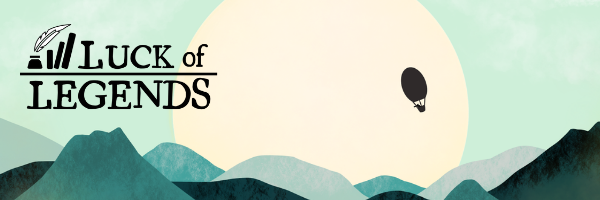
If you liked this post, make sure to subscribe to the TTRPGkids monthly newsletter to stay up to date on the latest reviews, tips and tricks, game and podcast list updates, and more! Thank you for playing tabletop RPGs with your kids and sharing this awesome hobby with the next generation!



14 thoughts on “Interview with Michael Low, creator of Starsworn and Luck of Legends!”